The increase need for energy is a direct result of our fast growing modern lifestyle.
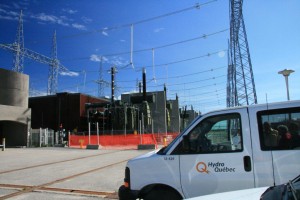
Before the use of fossil fuels to produce energy, man used the force of moving water. At first the moving water turned wheels that turned other things like saws, and mill wheels for grinding grain. Later the water turned generators that produced hydroelectric power.
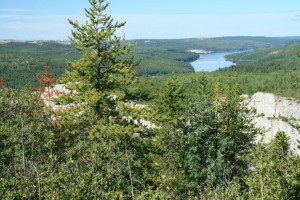
Hydro produced from rivers is a renewable resource. Except in unusual circumstances the river will continue to get its water from rain and melting snow, for years and years. One good thing about water is the fact that molecules of water entering a watershed will eventually pass through the system. The Province of Quebec is fortunate in having huge quantities of water in areas to the north where the population is low.
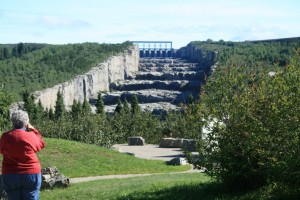
Outside of Quebec, it is not likely that many people know the magnitude of the James Bay project. Two rivers, the La Grande and the Eastmain Rivers, drain much of Northern Quebec westward into James Bay.
To harness the power of the water they built dams and eight generating plants on the La Grande. To get more water they diverted 90% of the Eastmain River’s flow into the La Grande system. All of this increased watershed almost doubled the flow of the La Grande River.
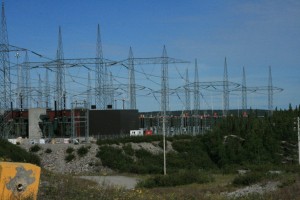
The electric power produced exceeded 10,000 MW. La Grande-2 dam and reservoir required the blasting of a huge spillway that steps down through the rock dropping the height of three Niagara Falls. Underground they carved out the world’s largest powerhouse. Entering this massive cavern is more like walking into a giant factory building. Everything is clean and tidy. The mighty generators seem to stretch endlessly into the distance. A close inspection of one of the generators shows the rotating of a huge shaft that connects the turbine to generator, and there is a slight tremor in the floor. This portion of the project can produce 5300 MW of electricity. The men on duty here are more like maintenance robots. The whole complex is run from a desk in Montreal.
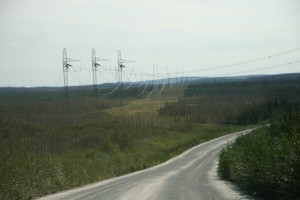
The James Bay complex involves waters that reach back as far east as Labrador. This is an immense watershed covering the sub-Arctic region where winters start in October and may last until May. Although the region is sparsely settled it is the home territory of the Cree and the Inuit. Apparently they were missed out on the initial discussions and didn’t become aware of the project until Quebec Hydro started building a 700 km road to Radisson, near James Bay. This road was completed by 1974. In 1974 the Native Cree signed the Quebec Agreement to settle a score of land claims.
This is a well built highway, created to carry heavy generators and other parts to the project. Unfortunately, the first 300 kilometres were used by log trucks without any control on weights and they turned the flat road into a road with broken surface and bad bumps that require your RV to crawl at times. The north part of the road is good.
Thirteen large bridges cross a myriad of rivers, some with very attractive scenery, and some with very low flow because the river has been diverted to feed the main project of Phase I on the La Grande River. Eighteen thousand workers participated in the building of the dams, and high dikes that created the reservoirs. Hundreds of miles of hydro lines were built to take the energy south.
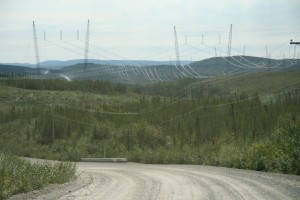
When you look at a hydro line corridor, wide and bare of trees, you wonder how the men could have removed so many trees for such a long distance. That’s an incredible project, but 14 years later it was mostly completed.
The eight dams and power houses mean that same molecule of water from the upper end of the watershed passes through several generators and produces power over and over again. What a vast project! Move over Paul Bunyan!
Happy RVing !
This will be one of the tours in a Touring North America guide book about Eastern Canada.
For more than four decades James Stoness has travelled the roads of North America, photographing and writing about what he has seen. His travel articles and beautiful pictures have been published in several magazines and newspapers. He is also the author of five western novels. Visit his website at: www.stonesstravelguides.com
